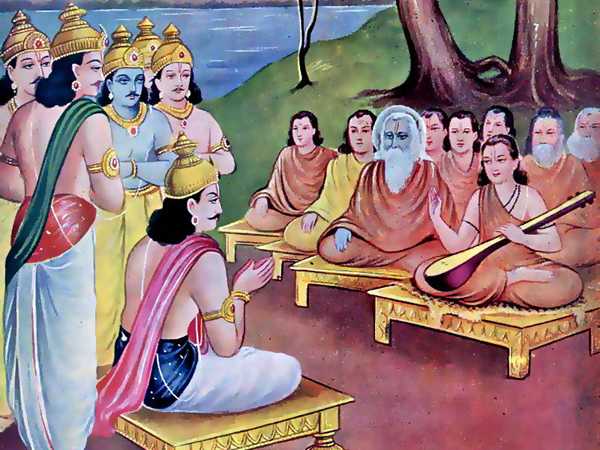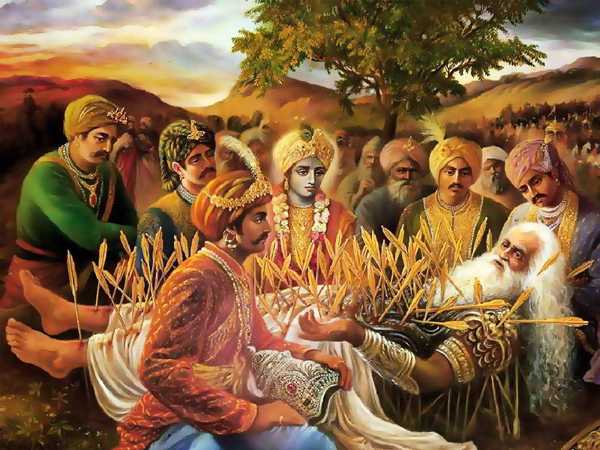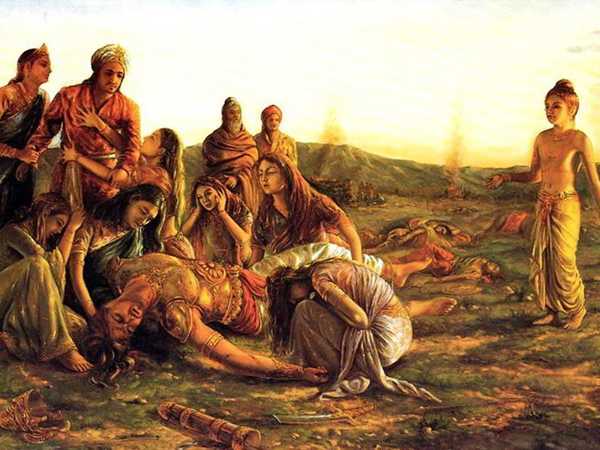Chapter 314

‘Yajnavalkya said, Brahmanas conversant with the topics of enquiry speakof the two feet as Adhyatma, the act of walking as Adhibhuta, and Vishnuas Adhidaivatam (of those two limbs). The lower duct (anal canal) isAdhyatma; its function of throwing out the excreta is Adhibhuta, andMitra (Surya) is the Adhidaivata (of that organ). The organ of generationis called Adhyatma. Its agreeable function is called Adhibhuta, andPrajapati is its Adhidaivata. The hands are Adhyatma; their function asrepresented by acts is Adhibhuta; and Indra is the Adhidaivata of thoselimbs. The organs of speech are Adhyatma; the words uttered by them areAdhibhuta; and Agni is their Adhidaivata. The eye is Adhyatma; vision orform is its Adhibhuta; and Surya is the Adhidaivata of that organ. Theear is Adhyatma; sound is Adhibhuta; and the points of the horizon areits Adhidaivata. The tongue is Adhyatma, taste is its Adhibhuta; andWater is its Adhidaivata. The sense of scent is Adhyatma; odour is itsAdhibhuta; and Earth is its Adhidaivata. The skin is Adhyatma; touch isits Adhibhuta; and Wind is its Adhidaivata. Mind has been calledAdhyatma; that with which the Mind is employed is Adhibhuta; andChandramas is its Adhidaivata. Consciousness is Adhyatma; conviction inone’s identity with Prakriti is its Adhibhuta; and Mahat or Buddhi is itsAdhidaivata. Buddhi is Adhyatma; that which is to be understood is itsAdhibhuta; and Kshetrajna is its Adhidaivata. I have thus truly expoundedto thee, O king, with its details taken individually, the puissance ofthe Supreme (in manifesting Himself in different forms) in the beginning,the middle, and the end, O thou that art fully conversant with the natureof the original topics or principles. Prakriti, cheerfully and of her ownaccord, as if for sport, O monarch, produces, by undergoing modificationsherself, thousands and thousands of combinations of her originaltransformations called Gunahs. As men can light thousands of lamps frombut a single lamp, after the same manner Prakriti, by modification,multiplies into thousands of existent objects the (three) attributes (ofSattwa and Rajas and Tamas) of Purusha. Patience, joy, prosperity,satisfaction, brightness of all faculties, happiness, purity, health,contentment, faith, liberality, compassion, forgiveness, firmness,benevolence, equanimity, truth, acquittance of obligations, mildness,modesty, calmness, external purity, simplicity, observance of obligatorypractices, dispassionateness, fearlessness of heart, disregard for theappearance or otherwise of good and evil as also for pastacts,–appropriation of objects only when obtained by gift, the absenceof cupidity, regard for the interests of others, compassion for allcreatures,–these have been said to be the qualities that attach to theattribute of Sattwa. The tale of qualities attaching to the attribute ofRajas consists of pride of personal beauty, assertion of lordship, war,disclination to give, absence of compassion, enjoyment and enduring ofhappiness and misery, pleasure in speaking ill of others, indulgence inquarrels and disputes of every kind, arrogance, discourtesy, anxiety,indulgence in hostilities, sorrow, appropriation of what belongs toothers, shamelessness, crookedness, disunions, roughness, lust, wrath,pride, assertion of superiority, malice, and calumny. These are said tospring from the attributes of Rajas. I shall now tell thee of thatassemblage of qualities which springs from Tamas. They are stupefactionof judgment, obscuration of every faculty, darkness and blind darkness.By darkness is implied death, and by blind darkness is meant wrath.Besides these, the other indications of Tamas are greediness in respectof all kinds of food, ceaseless appetite for both food and drink, takingpleasure in scents and robes and sports and beds and seats and sleepduring the day and calumny and all kinds of acts proceeding fromheedlessness, taking pleasure, from ignorance (of purer sources of joy)in dancing and instrumental and vocal music, and aversion for every kindof religion. These, indeed, are the indications of Tamas–‘”



